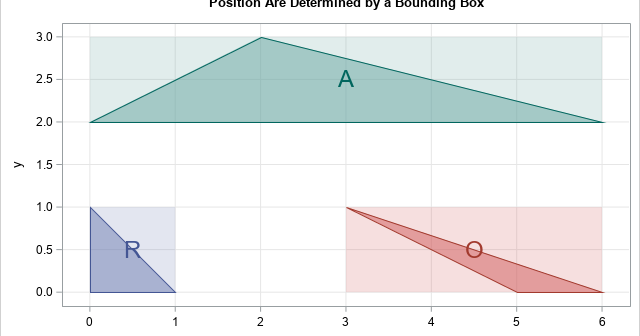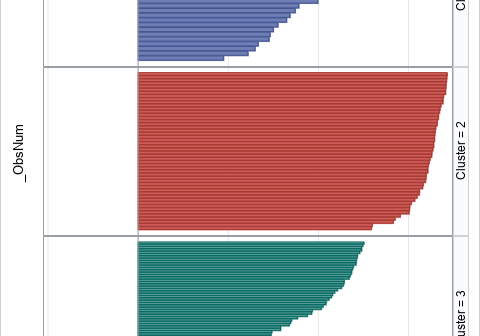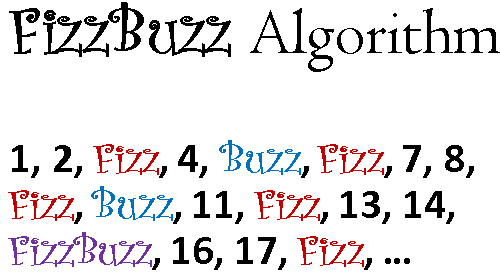The DO Loop
Statistical programming in SAS with an emphasis on SAS/IML programs
Labeling objects in graphs can be difficult. SAS has a long history of providing support for labeling markers in scatter plots and for labeling regions on a map. This article discusses how the SGPLOT procedure decides where to put a label for a polygon. It discusses the advantages and disadvantages

SAS supports many ways to compute the rank of a numeric variable and to handle tied values. However, sometimes I need to rank the values in a character categorical variable. For example, the values {"Male", "Female", "Male"} have ranks {2, 1, 2} because, in alphabetical order, "Female" is the first-ranked

A previous article defines the silhouette statistic (Rousseeuw, 1987) and shows how to use it to identify observations in a cluster analysis that are potentially misclassified. The article provides many graphs, including the silhouette plot, which is a bar chart or histogram that displays the distribution of the silhouette statistic

Assigning observations into clusters can be challenging. One challenge is deciding how many clusters are in the data. Another is identifying which observations are potentially misclassified because they are on the boundary between two different clusters. Ralph Abbey's 2019 paper ("How to Evaluate Different Clustering Results") is a good way

A lot of programmers have been impressed by the ability of ChatGPT, GPT-4, and Bing Chat to write computer programs. Recently, I wrote an article that discusses an elementary programming assignment, called FizzBuzz, which is sometimes used as part of a hiring process to assess a candidate's basic knowledge of

Recently, I learned about an elementary programming assignment called the FizzBuzz program. Some companies use this assignment for the first round of interviews with potential programmers. A competent programmer can write FizzBuzz in 5-10 minutes, which leaves plenty of time to discuss other topics. If an applicant can't complete the
